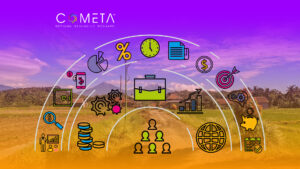Sometimes we think a Monitoring, Evaluation and Learning (MEL) system has to be super complex. But it’s possible to start building an in-house MEL system without a big investment of time or resources—and it can lay the groundwork for a better understanding of how our processes are performing and their impact.
Sebastián Hernández Mora, Senior Consultant, Colectivo META
Previously, we defined some key concepts behind a MEL system. Now let’s think about how we can build one in a more “DIY” way—that is, with more limited resources, but without cutting corners on rigor. To do that, we need to ask ourselves the following question:
Why do we want to monitor and evaluate our progress?
The context in which civil society organizations operate constantly pushes us to adapt our strategies. To do that, we need to learn what’s working well and where there’s room for improvement in our activities.
Building an internal Monitoring, Evaluation, and Learning (MEL) system helps us do just that. It allows us to regularly measure and assess our processes—to take a kind of “snapshot” of where things stand. This gives us a different perspective than our Theory of Change, which we’ve talked about before. These snapshots are captured using specific tools and instruments that make it easier to collect and analyze information.
At first, tracking a bunch of variables might seem complicated. But the truth is, the benefits are many—and they reach a range of stakeholders across the civil society space.
Benefits of a MEL system:
- For our organization: It helps us understand whether we’re making progress toward our goals through our planned activities—and whether those activities are contributing to long-term change. It also gives us insight into any contextual challenges, whether things are going smoothly, or if it’s time to rethink our approach.
- For our allies: It helps us understand whether the activities we’re doing together—or those that involve partner organizations—are delivering the expected outcomes, or if there are operational aspects we need to adjust.
- For the communities we work with: It lets us see whether we’re providing the right kind of information or support—and whether that’s making a meaningful difference in addressing the challenges they face.
- For our donors: It provides clear information on how the funding is being used and whether it’s being spent strategically. It also gives us the data we need for proper accountability, opening the door to future funding opportunities.
Roadmap for a “DIY” MEL System
Building a “DIY” MEL system starts with some in-house reflection. That usually means laying out a Theory of Change, breaking it down into goals, strategies, activities, and assumptions—in other words, defining a strategic north to guide us toward our desired change.
From there, we need to identify the key resources and information we’ll need to gather to monitor and/or evaluate our work. To help with that, here are six points to consider.
Clarity in what we want and need in a MEL System
- Define what we want to measure and/or evaluate
We need to be clear about which of our goals or activities we want to focus on—or if we’re aiming to measure the overall project. That clarity helps us understand what change we expect to see and where we’re starting from (our baseline).
- Identify the information we need (and can access) to measure it
We must think about the kind of information we need to gather and whether it’s realistically within reach. Is it easy to collect? This includes both quantitative and qualitative data that we’ll gather later using specific tools we’ll define, like surveys, interviews, document reviews, or indicators.
Indicators and information: the minimum necessary to start measuring
- Set up a (simple) list of indicators
It’s important to establish a few indicators—that is, reference points based on qualitative or quantitative data—to understand where we’re starting and where we want to go. There are two main types of indicators we can use.
a. Result indicators – These are useful for tracking progress on specific activities. For example: X number of workshops held in X communities, or X legal cases supported from X date to X date.
- Impact indicators – These come in handy for midterm or final project evaluations. For instance: measurable shifts in public policy agendas or significant increases in civic participation.
c. Since we’re talking about a “DIY” MEL system, it’s best to keep both result and impact indicators to a manageable number—ideally no more than 10.
- Gather and analyze the information
This step is all about using the tools we’ve chosen to collect the data that will feed our indicators with accurate information. Once we’ve gathered the data, we need to analyze it and compare it to our starting point (the baseline) to understand the results of our monitoring and/or evaluation. It also gives us the chance to generate clear, experience-based learnings we can build on.
- Keep the information up to date
It’s essential to set a routine or schedule for updating the data we collect. That way, we can keep track of our progress, make timely decisions, and stay clear on whether we’re moving toward the outcomes we’re aiming for. Outdated information can give us a distorted picture of how things are going—and keep us from acting when it matters most.
Ready for the last step
- Create a database
We don’t need highly technical skills –just a basic spreadsheet (like Excel or Google Sheets) can be enough to get started. There, we can centralize all the information we’ve collected, organize it by indicators, dates, activities, or people in charge, and keep it updated regularly. Having this kind of database makes both monitoring and evaluation much easier, since we’ll have a clear, organized, and accessible source of information to work from
Monitoring and evaluating is starting to transform our organization
Many times, we find ourselves wondering whether we’re really creating the change we set out to achieve—or if our activities are having the impact we hoped for. That’s why it’s worth taking the first step toward building our own “DIY” MEL system.
At COMETA, we’re committed to helping civil society organizations develop the skills they need to drive meaningful change through ongoing monitoring and evaluation of their own work. So don’t hesitate to reach out and share your experiences implementing these first steps in your organization.





